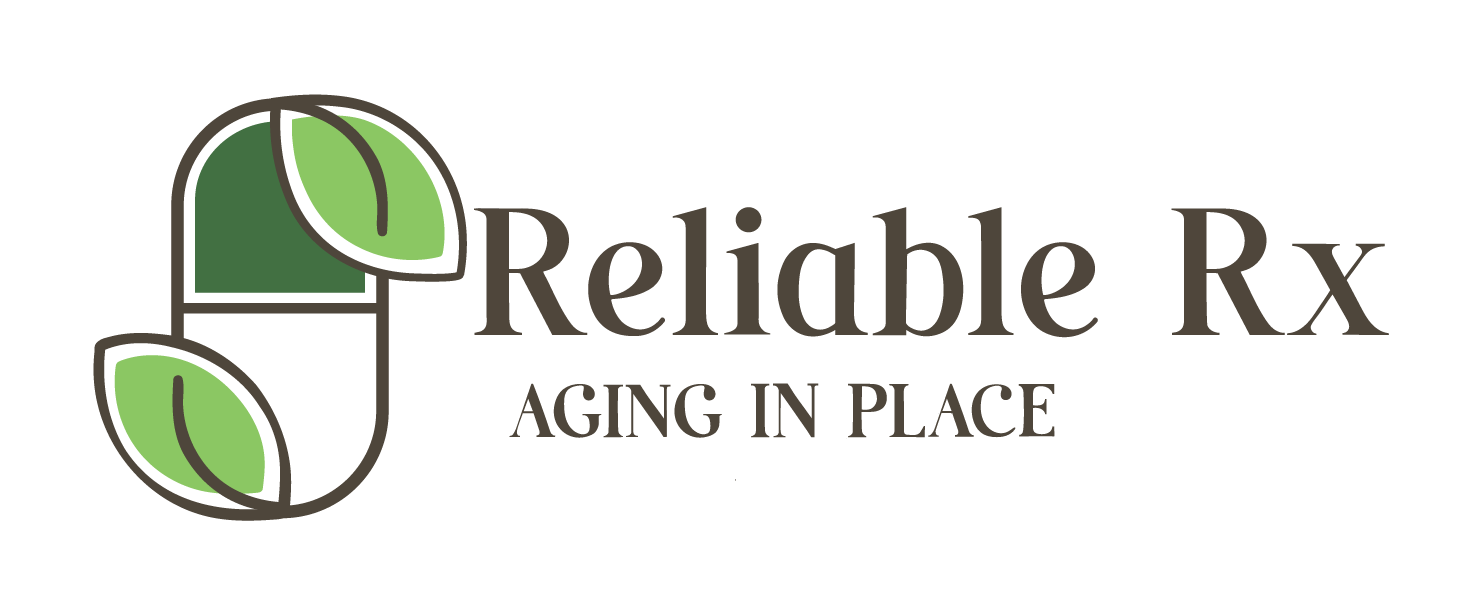Nine Smart Ways to Stop Medication Errors Before They Start
- reliablerx513
- 3 minutes ago
- 2 min read
A Caregiver’s Guide to Keeping Loved Ones Safe and On Track
When you’re caring for someone elderly or disabled, even a small medication mistake can have serious consequences. From missed doses to drug interactions, the risks are real—but they’re also preventable. In this guide, you’ll discover nine smart, practical ways to reduce errors and protect the health of those you care for. These are the same strategies used by medical professionals and trusted caregiver organizations—now made simple for you.
1. Build and Maintain an Accurate Medication List
Compile every prescription, over‑the‑counter drug, supplement, dosage, purpose, and timing.
Always include brand/generic names and reason for use.
Keep the list updated and share it with doctors, pharmacists, and other caregivers.
2. Create Organization Systems
Use pill organizers (daily/weekly) or medication charts pinned in visible areas like the fridge.
Set reminders: simple alarms, calendar alerts, or medication apps like MyPillBox or Medisafe.
Consider “smart” pill dispensers that alert when doses are missed.
3. Understand the “Five Rights”
Always check: right person, right medication, right dose, right route, right time. Reinforce these at each administration step to minimize error risk.
4. Combat Polypharmacy & Drug Interactions
Seniors often take multiple medications, heightening interaction risk.
Regularly reconcile the full medication list, especially when new drugs are added.
Use one pharmacy when possible to aid pharmacists in spotting interactions.
Before making changes, consult healthcare providers to evaluate necessity and simplify regimens where feasible.
5. Communicate Proactively with Healthcare Providers
Ask clarifying questions about each medication: why, how, possible side effects, food interactions, and dosages.
Inform doctors and pharmacists about all medications—including OTC drugs and supplements—to reduce hidden risks.
Share observations: mood changes, unusual tiredness, dizziness, or early depletion of medication are important clues.
6. Manage Home Challenges to Reduce Errors
Use good lighting and reading glasses to minimize misidentifying bottles.
Keep each person’s medications stored separately; never mix them into shared containers.
Dispose of expired medications safely, and discourage sharing prescriptions—even within the same household.
7. Access Reliable Training & Systems
Seek training on dosage calculation, administration techniques, and spotting adverse reactions—this is especially vital in home care or assisted-living settings.
When possible, implement systems like medication reconciliation and standardized protocols to ensure consistency and safety across caregiver shifts.
8. Use Technology Empoweringly
Medication reminder apps or smart devices reduce memory-based errors.
These tools support multi-channel reminders, intake confirmation, and barcode scanning of prescription bottles, and can generate calendar alerts automatically.
9. Foster a Safe Communication Culture
Encourage open dialogue about concerns or mistakes—without blame—to enable improvements over time.
Strong lines of communication between caregivers, family members, and health professionals reduce misinterpretations and errors.
Summary Checklist for Caregivers
Action | Purpose |
Maintain an up-to-date full medication list | Avoid omissions, double dosing, and drug interactions |
Use pill organizers and reminders | Promote adherence and daily consistency |
Apply the “Five Rights” to each administration | Reduce the risk of the wrong person, drug, dosage, time, or route |
Reconcile medications after changes | Prevent unintended continuation or duplication |
Communicate openly with providers | Ensure correct information flow and understanding |
Train and review administration practices | Reinforce safety standards and minimize human error |
Leverage technology | Support memory and automate reminders |
Encourage a safe communication culture | Facilitate reporting and continuous improvement |
